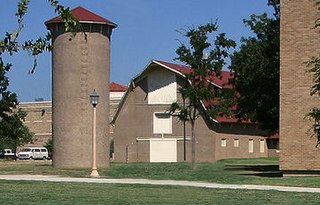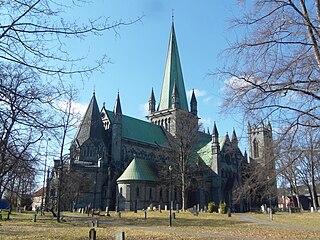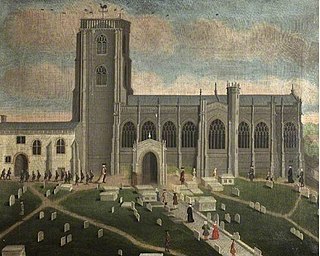Related Research Articles
Edwards v. Aguillard, 482 U.S. 578 (1987), was a United States Supreme Court case concerning the constitutionality of teaching creationism. The Court considered a Louisiana law requiring that where evolutionary science was taught in public schools, creation science must also be taught. The constitutionality of the law was successfully challenged in District Court, Aguillard v. Treen, 634 F. Supp. 426, and the United States Court of Appeals for the Fifth Circuit affirmed, Aguillard v. Edwards, 765 F.2d 1251. The United States Supreme Court ruled that this law violated the Establishment Clause of the First Amendment because the law was specifically intended to advance a particular religion. In its decision, the court opined that "teaching a variety of scientific theories about the origins of humankind to school children might be validly done with the clear secular intent of enhancing the effectiveness of science instruction."
In secular usage, religious education is the teaching of a particular religion and its varied aspects: its beliefs, doctrines, rituals, customs, rites, and personal roles. In Western and secular culture, religious education implies a type of education which is largely separate from academia, and which (generally) regards religious belief as a fundamental tenet and operating modality, as well as a prerequisite for attendance.
Separate but equal was a legal doctrine in United States constitutional law, according to which racial segregation did not necessarily violate the Fourteenth Amendment to the United States Constitution, which nominally guaranteed "equal protection" under the law to all people. Under the doctrine, as long as the facilities provided to each race were equal, state and local governments could require that services, facilities, public accommodations, housing, medical care, education, employment, and transportation be segregated by race, which was already the case throughout the states of the former Confederacy. The phrase was derived from a Louisiana law of 1890, although the law actually used the phrase "equal but separate".

The Wisconsin Evangelical Lutheran Synod (WELS), also referred to simply as the Wisconsin Synod, is an American Confessional Lutheran denomination of Christianity. Characterized as theologically conservative, it was founded in 1850 in Milwaukee, Wisconsin.
Epperson v. Arkansas, 393 U.S. 97 (1968), was a unanimous landmark United States Supreme Court case that invalidated an Arkansas statute prohibiting the teaching of human evolution in the public schools. The Court held that the First Amendment to the United States Constitution prohibits a state from requiring, in the words of the majority opinion, "that teaching and learning must be tailored to the principles or prohibitions of any religious sect or dogma." The Supreme Court declared the Arkansas statute unconstitutional because it violated the Establishment Clause of the First Amendment. After this decision, some jurisdictions passed laws that required the teaching of creation science alongside evolution when evolution was taught. The Court also ruled these laws were unconstitutional in the 1987 case, Edwards v. Aguillard.
A parochial school is a private primary or secondary school affiliated with a religious organization, and whose curriculum includes general religious education in addition to secular subjects, such as science, mathematics and language arts. The word parochial comes from the same root as "parish", and parochial schools were originally the educational wing of the local parish church. Christian parochial schools are called "church schools" or "Christian schools."

Chigwell is a town and civil parish in the Epping Forest District of Essex, England. It is part of the urban and metropolitan area of London, and is adjacent to the northern boundary of Greater London. It is on the Central line of the London Underground. In 2011 the parish had a population of 12,987.

A Sunday school, sometimes known as a Sabbath school, is an educational institution, usually Christian in character and intended for children or neophytes.
The Confraternity of Christian Doctrine (CCD) is an association established in Rome in 1562 for the purpose of providing religious education. In modern usage, it refers to the Confraternity of Christian Doctrine, Inc., which owns the copyright on the New American Bible Revised Edition, and is a term colloquially used for the catechesis or religious education program of the Catholic Church, normally designed for children. In some Catholic parishes, CCD is called PSR, meaning Parish School of Religion, or SRE, meaning Special Religious Education.

Agricultural education is the systematic and organized teaching, instruction and training available to students, farmers or individuals interested in the science, business and technology of agriculture as well as the management of land, environment and natural resources.
Education in Norway is mandatory for all children aged from 6 to 16. Schools are typically divided into two divisions: primary and lower secondary schooling. The majority of schools in Norway are municipal, where local governments fund and manage administration. Primary and lower secondary schools are available free of charge for all Norwegian citizens as a given right.

The Congrégation de Notre Dame (CND) is a religious community for women founded in 1658 in Ville Marie (Montreal), in the colony of New France, now part of Canada. It was established by Marguerite Bourgeoys, who was recruited in France to create a religious community in Ville Marie. She developed a congregation for women that was not cloistered; the sisters were allowed to live and work outside the convent. The congregation held an important role in the development of New France, as it supported women and girls in the colony and offered roles for them outside the home.

The Haitian Educational System yields the lowest total rate in the education realm of the Western Hemisphere. Haiti's literacy rate of about 61% is below the 90% average literacy rate for Latin American and Caribbean countries. The country faces shortages in educational supplies and qualified teachers. The rural population is less educated than the urban. The 2010 Haiti earthquake exacerbated the already constrained parameters on Haiti's educational system by destroying infrastructure and displacing 50–90% of the students, depending on locale.

The Norwegianization of the Sámi was an official policy carried out by the Norwegian government directed at the Sámi people and later the Kven people of northern Norway, in which the goal was to assimilate non-Norwegian-speaking native populations into an ethnically and culturally uniform Norwegian population.

Margaret Roding is a village and civil parish in the Uttlesford district of Essex, England. The village is included in the eight hamlets and villages called The Rodings. Margaret Roding is 7 miles (11 km) north-west from the county town of Chelmsford.

Church building in Norway began when Christianity was established there around the year 1000. The first buildings may have been post churches erected in the 10th or 11th century, but the evidence is inconclusive. For instance under Urnes Stave Church and Lom Stave Church there are traces of older post churches. Post churches were later replaced by the more durable stave churches. About 1,300 churches were built during the 12th and 13th centuries in what was Norway's first building boom. A total of about 3,000 churches have been built in Norway, although nearly half of them have perished. From 1620 systematic records and accounts were kept although sources prior to 1620 are fragmented. Evidence about early and medieval churches is partly archaeological. The "long church" is the most common type of church in Norway. There are about 1620 buildings recognized as churches affiliated with the Church of Norway. In addition, there are a number of gospel halls belonging to the lay movement affiliated with the Church of Norway as well as churches belonging to other Christian bodies. Until the 20th century, most churches were built from wood. 220 buildings are protected by law, and an additional 765 are listed as valuable cultural heritage.
In New Zealand, a state-integrated school is a former private school which has integrated into the state education system under the Private Schools Conditional Integration Act 1975, becoming a state school while retaining its special character. State-integrated schools were established by the Third Labour Government in the early 1970s as a response to the near-collapse of the country's then private Catholic school system, which had run into financial difficulties.

In the United States, elementary schools are the main point of delivery of primary education, for children between the ages of 4–11 and coming between pre-kindergarten and secondary education.
The education system of New Brunswick comprises public and private primary and secondary schools and post-secondary institutions. By the British North America Act, 1867, education falls entirely under provincial jurisdiction. There is no federal government department or agency involved in the formation or analysis of policy regarding education. Also by constitutional right, Roman Catholics are entitled to their own school system; this led in New Brunswick to contention in the early years of the nation, and, in 1871, to the first case sent from Canada to the Judicial Committee of the Privy Council, Maher v Town Council of Portland.

Yeovil Grammar School was a grammar school in Yeovil, Somerset, which was founded or refounded about 1860 and closed in 1906 when its only headmaster, Henry Monk, retired.
References
- 1 2 Lovoll, Odd Sverre (2010). Norwegian Newspapers in America: Connecting Norway and the New Land. St. Paul, MN: Minnesota Historical Society Press. p. 15.
- ↑ Stokker, Kathleen (2007). Remedies and Rituals: Folk Medicine in Norway and the New Land. St. Paul, MN: Minnesota Historical Society Press. ISBN 9780873517508 . Retrieved August 9, 2018.
- ↑ Mikalsen, Kaja Staude (December 1, 2014). "Skoleprotokoller skal fortelle barns historie fra 1800-tallet". NRK. Retrieved August 9, 2018.
- ↑ Bø, Inge (June 20, 2017). "Hvis en gutt fra Tasta sa "mamma" på 1950-tallet, ville han blitt ertet for det". Stavanger Aftenblad. Retrieved August 9, 2018.
- ↑ Thune, Taran. "Norsk utdanningshistorie". Store norske leksikon. Retrieved August 9, 2018.
- 1 2 Flint, John T. (2009). Historical Role Analysis in the Study of Religious Change: Mass Educational Development in Norway, 1740–1891. Cambridge: Cambridge University Press. p. 17.